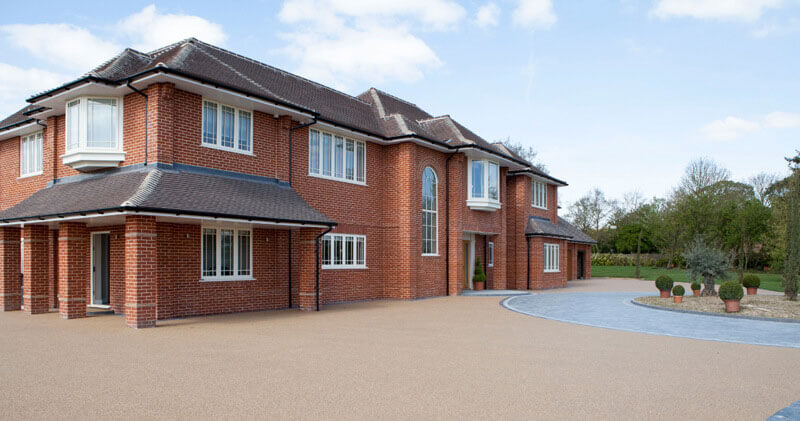
Over the past 25 years significant advances in polymer and epoxy resins have led to this hard wearing and flexible surface becoming increasingly popular as a surface used for driveways and pathways.
This surface is low maintenance and is reasonably resistant to weeds.
As a surface it is UV resistant meaning it doesn’t fade in the sunlight and it’s also oil and petrol resistant meaning if there is a spill it won’t stain.
Resin Bound Driveways are also tolerant to a wide range of temperatures either hot or cold.
For the more adventurous the surface can be patterned however you want. However, for the more traditional, there are also a huge range of aggregate blends possible with a resin bound driveway so we can make it look as modern or traditional as you want.
Covering a wide range of areas across the south of England including Cambridgeshire, Essex, Hertfordshire, London and Suffolk. Contact us today for a free no-obligation quote.
Government planning and local authorities look favourably on Resin Bound driveways and paths because they are permeable and water can drain away at a more ‘natural’ rate than from non porous surfaces.
In 2008 this legislation was brought in as a response to the number of people who were converting their front gardens into driveways. In turn this contributed towards more flash flooding due to the speed of run off into the drainage area.
Because of this, planning permission is not usually required, where non permeable surfaces like concrete, will usually require permission for surfaces that are over 5 square metres.
If you’re not too sure whether you will need planning permission or not then why not get in touch with us and we will advise you.
1. Identify potential problems like high maintenance spaces, waterlogging, any problems with laying the base.
2. Make repairs if required to current surface
3. Install foundation layer (may need concreting first)
4. Mix resin and aggregate layer after ‘agitating’ the resin
5. Apply mix. Once mixed the compound is spread evenly across the selected area, followed by smoothing and flattening the covered area. This is quite similar to applying plaster (it’s also the bit where we will probably need a quick cup of tea after finishing this.
6. Add any design aspects if these are required.
Here’s what some of our happy customers had to say about our services: